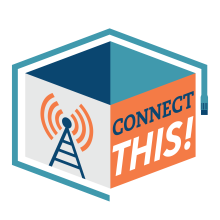One Map to Rule Them All, Challenge Abuses, and the End of the Fiber Boom | Episode 58 of the Connect This! Show

Join us live on Tuesday, November 22nd, at 1:30pm ET for the latest episode of the Connect This! Show. Co-hosts Christopher Mitchell (ILSR) and Travis Carter (USI Fiber) will be joined by regular guests Kim McKinley (UTOPIA Fiber) and Doug Dawson (CCG Consulting). Special guest Mike Dunne, from FiberRise, will join partway through the show. The panel will talk about the first version of the brand-new FCC broadband maps, released last Friday, internal Cable One emails admitting the company's misuse of the challenge process to block competition from publicly funded providers, updates on the broadband nutrition label, and whether rising interest rates will spell an end to the fiber boom.
Email us at [email protected] with feedback and ideas for the show.
Subscribe to the show using this feed or find it on the Connect This! page, watch on YouTube Live, on Facebook live, or below.



